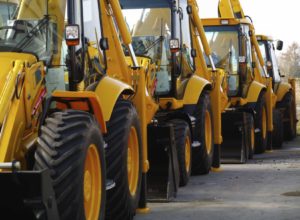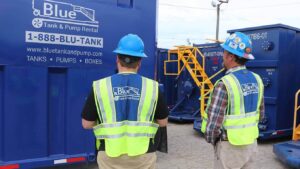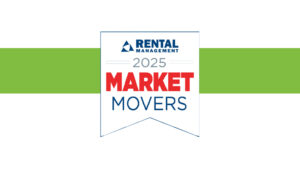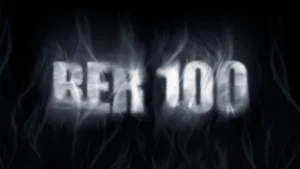Your smallest expense is also your costliest one. What you can do.
Parts buying is complicated, time-intensive, and requires your most skilled labor. And while a rental company’s management team often may not realize it, from an operating perspective it also typically is by far the costliest type of procurement. Point-of-Rental Software and SmartEquip have recently integrated their software platforms to provide a faster, more seamless parts ordering process.
For a typical North American rental company, the average time it takes for a service technician to identify a repair part and create an internal request for the part to be ordered is just under 22 minutes. Subsequently creating and submitting a purchase order for parts buying adds another 25 minutes to the process. This makes parts ordering the most time-consuming form of buying. And, because it requires the involvement of skilled technical personnel, it also comes at a high hourly labor cost.
While rental companies typically dedicate less than 5% of their annual total dollar spend to parts, which makes parts buying one of the smallest expenses dollar-wise, the number of parts-related orders may account for as much as 75% of all purchase orders, making it by far the most frequent type of spend. And because the costs from time intensity and labor skill requirement apply whenever a part is being ordered, it is the number of orders – not their value – that drives the cost to the rental company. Therefore, parts as the smallest expense from a dollar view are also the costliest one, from an operating perspective. And yet, rental companies seeking greater purchasing efficiency traditionally have not paid much attention to parts, one reason being their relatively low value.
In addition to the extensive service labor requirements of parts ordering, however, parts buying also comes with a massive and never-ending administrative labor effort, which, too, is not always fully visible to management. For example, rental & fleet management systems all require that parts you purchase first be entered in your system’s “item master file”. If the item is not there, your employees cannot cut a purchase order. From an administrative perspective the underlying parts master file is huge, as it makes up a massive universe of items that you might at some point need to order, given the size and diversity of your equipment fleet, and of your often unpredictable repair needs. Worse still, part numbers and descriptions keep changing: manufacturers continuously add new parts to their catalogs, and they change the numbers and descriptions of existing parts, through what is called “supercession”. Therefore, the rental fleet not only needs to administer a massive master data file, but the file is also one that never stands still.
Finally, the very same factors that drive the time requirement for parts buying are also responsible for the high rate of ordering errors. In fact, rental companies that have conducted studies on order accuracy have discovered that parts mis-orders typically account for well above 90% of all purchasing mistakes a company makes in a given year. This should not be surprising. Parts may be model-, lot-, or serial number specific (“do I need a 20V or 24V coil for this scissor lift?”). They may have interdependencies with other parts (“when replacing this valve, you also need to replace the seal kit”). And the choice of the correct part may depend on the use history of a particular machine (“operating in high-dust settings requires frequent air filter changes”).
Financially, these ordering errors not only risk bloating your parts inventory, or imposing a cost of parts returns, but in repair situations they will typically add another 24-48 hours of equipment downtime, during which the machine cannot be rented. Therefore, in addition to all the costs due to the inherent complexity of parts buying, it also causes a loss in revenue.
So, in bleak summary:
Parts buying represents…
- The lowest dollar spend, which is also…
- The most frequent spend, with…
- The costliest administrative overhead, with…
- The most technical and error-prone operating overhead, where…
- You make the most mistakes and, when you do make a mistake…
- You lose revenue.
How Can Technology Help?
As complicated as parts procurement has been to rental companies, and as much as it has driven costs up and revenue down, answers are available. They just happened to have lived in the wrong places. More specifically, the hundreds of manufacturers whose equipment makes up your rental fleet, already hold and maintain most of the information you need (and currently chase), across thousands of different enterprise systems. Technology can now connect the millions of parts- and service-related pieces of information OEM’s store, and custom-deliver them into your company’s parts, repair, service, and purchasing workflow.
Here are some examples:
Parts Master Data Management:
Maintaining your master data traditionally has consisted of reentering into your system information that already lived in your suppliers’ systems, such as part numbers, part descriptions, unit-of-measure, etc. Each time a part number is either changed or added by a supplier, it was up to you to update your own system.
Now, with SmartEquip integration, your Point-of-Rental Enterprise system can connect directly with with your suppliers, so that when you seek to buy a part with a non-existent item number, it automatically gets added to your rental management system as well. You can save hundreds of hours of administrative maintenance effort each year, while being able to run your business using self-updating and always-current data.
Parts Identification:
Your technicians may not instantly know the serial number of a unit they are working on, but your Point-of-Rental system does. When you first assign an asset number to your equipment, you map it to a manufacturer serial number. So how can we use the information so we can stop worrying about complicated machine- or serial-number specific information?
Again, by connecting your rental management system with your suppliers, you can pull forward the correct, self-updating parts and service information for your equipment, simply by identifying its asset number and automatically receiving the correct, serial-specific information. The system indicate that a particular scissor lift requires a 24V (not 20V) coil, that you need to replace the seal kit as you change a valve, and will recommend more frequent air filter changes, given that you have been operating your generators in a desert environment. And because all of this information essentially comes from your suppliers’ systems, your service manager will not need to do a thing to create, maintain, or distribute it.
Administrative Streamlining:
And, finally, just as the connection to your suppliers will auto-update your item master files, enable you to quickly identify the correct asset- and context-specific part, the very same parts information can now write itself on to an internal stock pick ticket, auto-populate your purchase order, and electronically submit that PO to your supplier.
The Impact on Profitability
Applying technology to solve these challenges has tremendous economic impact. For example:
- Streamlining parts identification increases your service technicians’ wrench time, as they no longer need to search for the right information and undo errors.
- Automating the creation of PO’s will do the same, while providing management the ability to track cost of equipment ownership on an individual-asset basis. And,
- Being able to rely on a self-updating data master file – which is the very core of your service activity – will drive down direct administrative and other related costs.
But, perhaps even more strikingly, this technology will also drive up revenue:
If your average equipment repair time has been reduced by, say, 90 minutes, you not only save 90 minutes of service technician time, but also increase your equipment availability by 90 minutes, which increases rental revenue.
And it’s high-margin revenue. Say that you now have 3% point greater fleet availability, and that your company’s financial utilization is 50%, your rental revenue will increase by 1.5% points, while any associated cost increase from the increased rental will be very small. In other words, while increasing revenue, you have increased profitability even more!
Using technology to automate parts buying can have a tremendous impact on earnings and profitability. You just need to make sure you are not overly focused on the other 95% of your spend. To learn more about what SmartEquip can do for you, visit www.smartequip.com or email [email protected].
Dr. Alexander A. Schuessler is the founder of SmartEquip and president of its International Group. He is also a member of the technology committee of the European Rental Association. He can be reached at [email protected].




